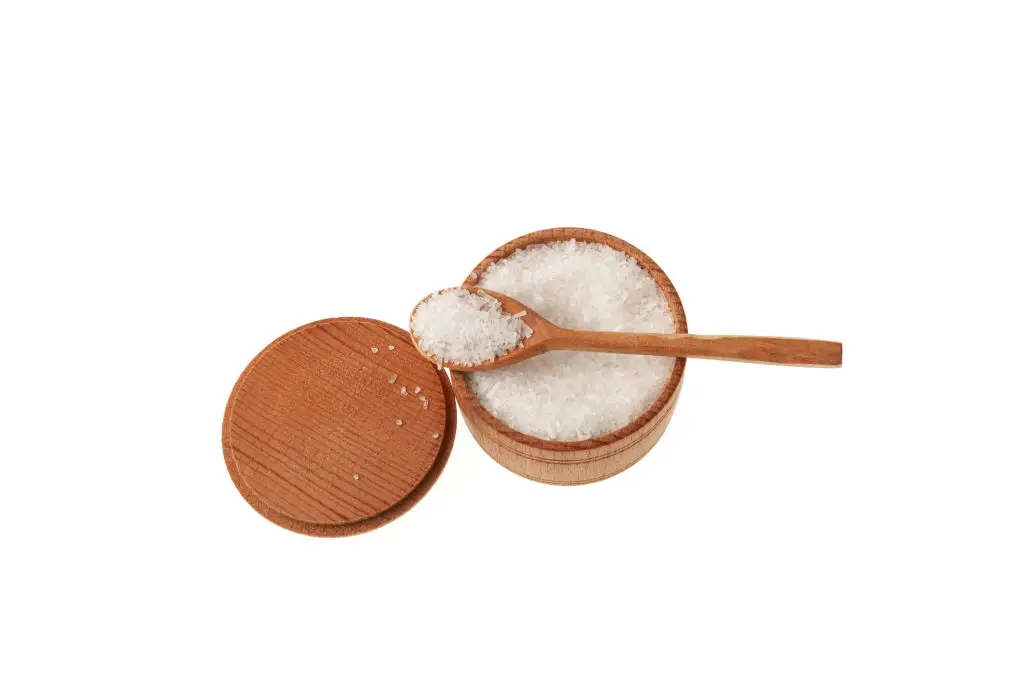Arthritis Antagonists: 11 Foods Rheumatologists Say to Erase From Your Fridge
Living with arthritis often means tuning in closely to what your body tells you—especially when it comes to what’s on your plate and in your fridge. Many people are surprised to learn how much their daily food choices can quietly influence joint comfort, stiffness, and overall energy. While there’s no single “Arthritis Diet” guaranteed to erase all aches, medical experts agree that some foods are more likely to fan the flames of inflammation or irritate sensitive joints. The journey to feeling empowered in your own skin isn’t about chasing deprivation or rigid meal plans; it’s about gathering practical wisdom, honoring what’s realistic, and making changes at your own pace.
1. Sugary Beverages

It can be easy to reach for a sugary soda or a sweetened iced tea when you’re craving something refreshing, but these drinks may be tough on inflamed joints. Rheumatology experts warn that beverages loaded with added sugars—think sweetened teas, sodas, fruit punches, and even some flavored waters—can trigger a burst of inflammation throughout the body. The underlying reason? High sugar intake signals the immune system to produce more cytokines, which are proteins that drive inflammation, and studies have seen a clear link between sugary drinks and increased levels of C-reactive protein, a marker of inflammation. Over time, these spike-and-crash cycles may worsen swelling, joint pain, and even make it harder to manage weight, which adds extra stress to already tender joints. If you find yourself sipping on these more often than you’d like, consider trying unsweetened alternatives like herbal teas, fruit-infused water, or simply sparkling water with lemon. Even small steps—like cutting the number of sweet drinks in half each week—can lead to meaningful improvements in both how your joints feel and your overall sense of well-being. Remember, it’s not about perfect choices but about what leaves you feeling your best.
2. Processed Meats

Foods like deli meats, bacon, sausage, and hot dogs do more than add convenience to your meals—they also introduce your body to things it doesn’t especially love: nitrates, nitrites, and advanced glycation end products (AGEs). These substances can fuel chronic inflammation and, according to research, may directly contribute to joint discomfort and arthritis flare-ups. For people living with arthritis, the preservatives and saturated fats in processed meats have been flagged by experts as particularly tough on joint health. Regular consumption can drive up levels of inflammatory markers, making everyday mobility a little more challenging. If you enjoy sandwiches or breakfasts built on cured meats, try leaning into leaner proteins such as roasted chicken, turkey, or plant-based deli slices. It’s all about discovery—exploring alternatives, maybe one or two days a week, that give your body a break from these inflammation promoters. These gentle swaps don’t just serve your joints; they can offer fresh taste and new kitchen inspiration, too.
3. Fried Foods

There’s something so comforting about crispy fried chicken or a fresh batch of french fries, but behind the crunch is a combination that’s not so gentle on inflamed joints. The typical frying process brings on a wave of trans fats and advanced glycation end products, which can ramp up inflammation at a cellular level. Some research suggests that regularly eating fried foods is associated with worsening arthritis pain and reduced joint function over time. The oils used—especially for deep frying—tend to be high in saturated or partially hydrogenated fats, making it harder for your body to keep inflammation at bay. That doesn’t mean crispy textures are off the table! Try oven roasting, air-frying, or using a thin layer of heart-healthy olive oil to reimagine your comfort favorites. If switching all at once sounds intimidating, start by replacing one fried meal a week and see how your body feels. Sometimes, even a small shift opens up a world of better energy and less stiffness.
4. Refined Carbohydrates

White bread, white rice, pastries, and similar refined carb choices can cause rapid increases in blood sugar, which may in turn feed the body’s inflammatory response. Rheumatologists often point to these foods as “empty calorie” contributors that fill you up fast, then leave you tired and aching soon after. Refined carbs are stripped of fiber and nutrients, so they trigger quick absorption and, for some, rolling waves of joint discomfort. Over time, diets loaded with these simple carbs have been linked with higher rates of inflammatory arthritis and other metabolic health problems. What’s a good swap? Look for whole grain breads, brown rice, or oatmeal — foods that digest more slowly and give your body more lasting, gentle energy. Even a few days a week of swapping white for wheat or grainier options can set you on a steadier course. It’s not about never enjoying a piece of toast or cake; it’s about letting your body—and your joints—enjoy those treats on your terms, not as everyday staples.
5. Excess Salt

Salt is a hard one to moderate. It sneaks into processed soups, canned goods, frozen dinners, and even the flavor packet of your favorite snack noodles. But when it comes to arthritis, too much sodium can lead to swelling, water retention, and according to recent studies, an increased risk of autoimmune flares. For people managing rheumatoid or psoriatic arthritis, a salt-heavy diet can mean more joint puffiness and stiffness, even if you don’t realize why. Here’s gentle encouragement: Taste foods before reaching for the shaker, experiment with seasoning blends, or try adding a squeeze of citrus or fresh herbs to brighten up meals. Every pinch you swap for something colorful gives your joints a stronger chance at feeling calm. If packaged foods are a mainstay in your lifestyle, choosing low- or reduced-sodium versions is a simple, significant step. Sustainability means progress, not perfection.
6. Dairy (Certain Types)

Dairy is a complicated character in the arthritis story. While calcium is essential for bone health, some people find that full-fat or highly processed dairy—like certain cheeses, whole milk, or flavored yogurts—can leave them feeling more inflamed. The research is mixed, with some studies linking specific dairy products to joint pain in sensitive individuals, while others see no effect. What rheumatologists agree on: listen to your body and experiment gently. If you notice a pattern between dairy-rich meals and your symptoms, consider trying low-fat, lactose-free, or plant-based dairy options. Swapping regular yogurt for unsweetened almond or oat yogurt is a low-risk, high-reward way to learn how your joints respond. Remember, self-care is about what works best for you—one cup, one snack, one day at a time.
7. Processed Snack Foods

Potato chips, cheese crackers, and an endless parade of brightly packaged snacks are almost designed to be irresistible. But many of these ultra-processed munchies stack unhealthy fats and refined sugars right on top of each other, pushing blood sugar skyward, encouraging inflammation, and making life a little tougher for your joints. Rheumatology experts note that frequent snacking on these foods can worsen swelling and stiffness for people with arthritis. What about a mid-afternoon craving? Aim for small but satisfying swaps—a handful of unsalted nuts, air-popped popcorn, or even a little homemade trail mix. If you’re not ready to leave chips behind, try portioning out a smaller bowl and savoring each bite. Change isn’t all-or-nothing; it’s a gentle process guided by curiosity and compassion for your future self.
8. Certain Vegetable Oils

Not all vegetable oils are created equal, especially when it comes to inflammation. Oils rich in omega-6 fatty acids—like corn oil, sunflower oil, and soybean oil—are common in processed and restaurant foods, but tipping the balance toward omega-6 and away from omega-3s can set the body up for more frequent inflammatory signals. Scientific studies suggest that a diet too high in these oils compared to omega-3s (like those in fish or flaxseed) often means rougher days for people with arthritis. If you do most of your own cooking, try reaching for olive oil, canola, or avocado oil instead. These swaps bring more balance—not perfection—to your meals. Being mindful of oil choices, especially in at-home dressings or sautés, gives you greater control over inflammation, energy, and comfort without sacrificing flavor.
9. Alcohol

Whether it’s a cold beer or a sweet cocktail at a gathering, alcohol has a complicated relationship with joint health. Regular or excessive drinking can spike systemic inflammation, raise uric acid levels, and sometimes interfere with arthritis medications. For those living with arthritis, that means alcohol can make joints feel stiffer, especially after a night of celebrating. Studies show that moderation is key; small amounts may be manageable, but frequent consumption is best minimized if joint health is a priority. If giving up the occasional toast feels restrictive, consider experimenting with non-alcoholic versions or simply alternating with sparkling water infused with fruit. Your body will often tell you quickly which choices bring more relief versus more discomfort. Again, this isn’t about strict rules—just having more tools to take care of yourself.
10. High-Fat, Processed Sweets

Few things are as tempting (or as celebratory) as a fresh doughnut or chocolate brownie, but high-fat, heavily processed desserts can unleash both sugar and unhealthy fats in a single bite—fueling the potential for inflammation in already sensitive joints. Research shows that the combination of refined sugars and trans or saturated fats is particularly aggravating to inflammatory conditions like arthritis. Not only do these treats affect your energy and blood sugar, but they can also leave your body feeling more achy or swollen soon after. Does this mean treats must vanish? Not at all! Enjoying fruit, dark chocolate, or occasionally making your own baked goods with better ingredients can satisfy your sweet tooth while being gently supportive of your joints. Success isn’t about denial—it’s about making each sweet choice a mindful one.
11. MSG and Food Additives

While Monosodium Glutamate (MSG) and certain additives are safe for most people, some individuals with arthritis notice they feel achier or more inflamed after eating fast food, takeout, or highly processed snacks packed with preservatives, flavor enhancers, and artificial sweeteners like aspartame. Medical opinion on MSG is divided, but anecdotal experience and some small studies suggest that food additives can, in sensitive people, prompt the immune system to react, leading to joint flares or extra stiffness. If you suspect these ingredients play a role in your symptoms, take a closer look at ingredient labels and try sticking to simpler, whole-food options when you can. Building awareness, rather than anxiety, is the core goal here—offering more chances to learn what truly supports your own wellness journey.
Gentle Guidance for the Journey Ahead

Navigating arthritis is a daily practice in tuning into what feels best for your unique body. The foods spotlighted here aren’t about punishment or guilt—they’re simply guideposts along a pathway toward greater comfort, less inflammation, and easier movement one gentle choice at a time. If eleven switches feel overwhelming, celebrate every small step: swapping a soda for water, choosing nuts over chips, or cooking with a new oil. Each effort stacks up, building resilience and comfort you can truly feel day to day. Real progress is about compassion: for yourself, for the circumstances that shape your habits, and for the gradual nature of healing. Experiment, pause, and notice what changes spark real relief. There’s no “perfect” diet—only versions that feel more possible and more nurturing from week to week. Your joints, your energy, and your spirit are all worthy of the kindness you show in both what you eat and how you think about the journey. Here’s to discovering which foods bring you not just less pain, but deeper vitality and delight in the everyday.